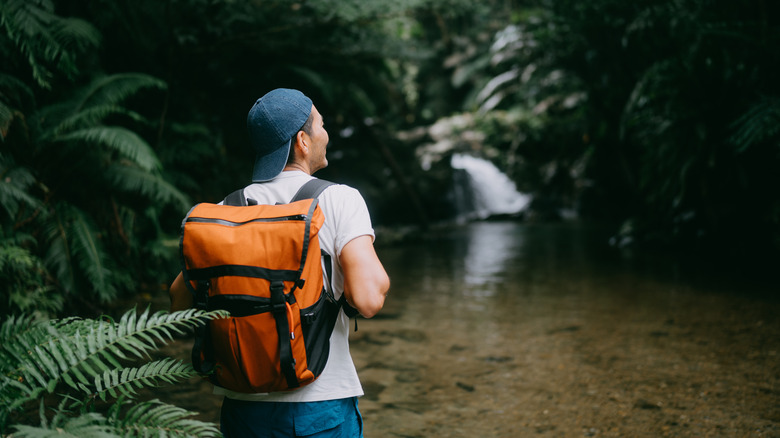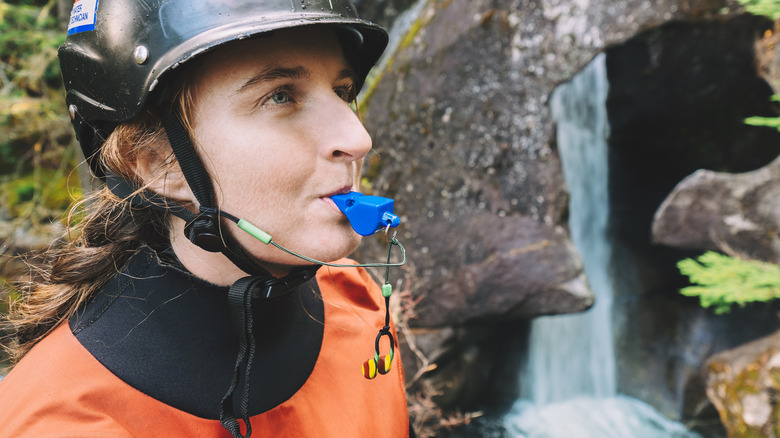The Important Safety Feature To Look For When Shopping For A Hiking Backpack
We may receive a commission on purchases made from links.
Backpacks have come a long way. Some say the first modern version was the metal-framed knapsack that Henry Mirriam patented in 1878. This pack was designed to distribute weight more evenly along a wearer's back, ushering in a whole new era of backpacking technology. Since then, manufacturers have fiddled with the same basic concepts, adding pockets, zippers, cupholders, extra openings, and strap-on rain covers. Spare loops and buckles allow you to affix almost anything, from sleeping rolls to tripods, and synthetic materials make them as water-resistant as they've ever been. Nowadays, backpacks are an ideal bag choice to help avoid outrageous budget airline carry-on fees, and you can effectively live out of them, even in the remotest wilderness.
But there's one feature that many hikers may overlook — something so elementary and inexpensive that we don't even bother to think about it. And yet, in the right situation, this little chunk of plastic could save your life. The item in question: a whistle. We tend to associate this shrill little doodad with track coaches and traffic cops, not wilderness expeditions. That all changes if you end up trapped in a ravine, washed down a river, or stuck in a remote location with a broken leg; in such emergencies, you can blow said whistle to catch the attention of rescuers or passing hikers. While you could always just keep a whistle in your pocket, most modern backpacks (likely even yours) come with one that's built right into the buckle of the sternum strap for easy access. The life-saving potential of packs with this safety feature is so high that they could easily be added to the list of the best and safest hiking gear out there.
Why emergency whistles are important while hiking
Are whistles really life-saving? In short, yes. Back in 2016, a hiker in Cane Beds, Arizona fell 100 feet into a slot canyon. The woman survived the night, but she had no way to climb out or call for help. When rescue teams started to search the area, they heard her blowing the emergency whistle she'd brought along. Two years later, three students got lost in Kentucky's Red River Gorge; the hikers and their rescuers were both equipped with whistles, which they used to track each other down, like a high-stakes game of Marco Polo. And as recently as 2024, search teams used a whistle to signal a lost hiker in Marion County, Florida.
Whistles work for several reasons: They're loud, of course, and the sound they make is at a pitch that most humans can hear. Its timbre is also unnatural; you wouldn't confuse a human-made whistle with just about any other auditory stimulus in the wild. The distinctive noise practically screams "emergency." Unlike semaphore or Morse code — systems used to communicate from great distances — whistles don't require any special skills or coding systems; you just exhale hard into the whistle and hope someone hears it.
Even smaller hiking backpacks like the 15 L Unisex Osprey SportLite have the built-in sternum-strap emergency whistles these days, but if your pack doesn't have one, consider buying one online or at your local outfitter — they're cheap, light, and take very little space. Getting turned around is always a potential risk in the great outdoors, as are falls, injuries, and bad encounters. Noise-making aside, if you do get lost on a hike, here's what to do.

